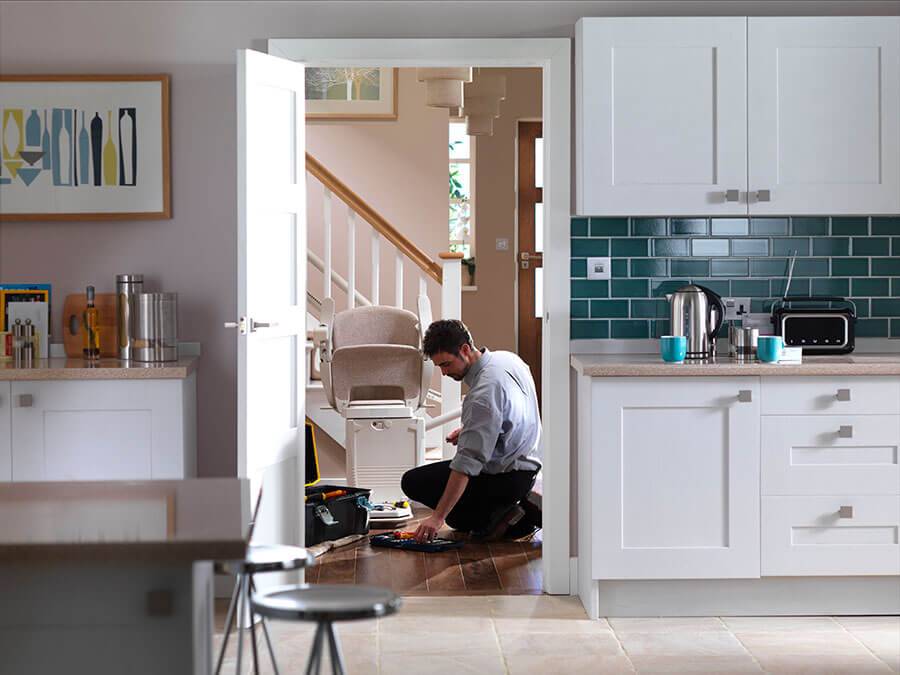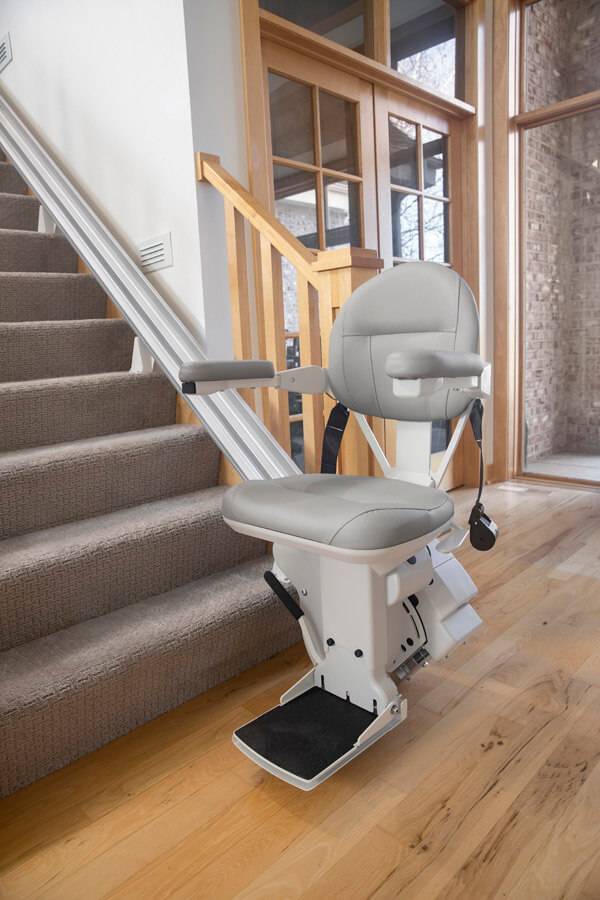Table of Contents
Straight and curved stairlifts are a great way to help people with mobility issues move safely between floors in their homes. They offer a simple solution to what can be a very challenging part of daily life—getting up and down the stairs. However, choosing the right stairlift can be a bit confusing, especially with two main options available: straight and curved stairlifts.
In this article, we’ll walk you through the differences, pros and cons, and other important factors to consider, so you can make the best decision for your home and needs.
What Are Straight & Curved Stairlifts?
Stairlifts come in two main types—straight and curved—based on the shape of your staircase.
Straight Stairlifts: These are designed for staircases that go straight up without any turns or landings. They are generally simpler and quicker to install, as the track runs in a straight line.
Curved Stairlifts: These are custom-made to fit staircases with curves, corners, or multiple landings. Because of the need for a custom track, curved stairlifts take longer to make and install, and they tend to cost more.
Both types of stairlift work by moving along a rail that is fitted to the stairs, not the wall, meaning there’s usually no need for major home alterations.
An In-Depth Comparison Of Features
When choosing between a straight or curved stairlift, there are several important features to consider. Here’s how they compare:
- Staircase Compatibility: Straight stairlifts can only be used on simple, straight staircases, while curved stairlifts are built to navigate corners, spirals, or any other tricky parts of your staircase.
- Customisation: Curved stairlifts are custom-built to fit the unique layout of your staircase. This makes them more versatile but also means they take longer to install. Straight stairlifts come in pre-made sizes, so they’re quicker and easier to fit.
- Weight Capacity: Both types of stairlifts come with different weight limits, so it’s important to check the maximum weight each one can hold. Curved installs sometimes offer higher weight limits, but this varies by manufacturer.
- Space Requirements: Straight stairlifts take up less room on a staircase since they only need to follow a straight line. Curved options, on the other hand, may take up a bit more space due to the bends and corners.
- Safety Features: Both types of installation include safety features like seat belts, armrests, and swivel seats to make getting on and off easier. Most models also stop automatically if something blocks the stairlift’s path.

The Pros & Cons Of Straight & Curved Stairlifts
Each type of stairlift has its own set of benefits and drawbacks. Here’s a quick breakdown:
Straight Stairlifts
Pros:
- Cheaper than curved models
- Quicker to install
- Easier to service due to their simple design
Cons:
- Only suitable for straight staircases
- Fewer customisation options
Curved Stairlifts
Pros:
- Can fit almost any staircase, no matter how complex
- Customisable to your home’s exact needs
- Often offer higher weight capacities
Cons:
- More expensive than straight stairlifts
- Longer installation times
Reconditioned Stairlifts
If you’re looking to save money, a reconditioned stairlift could be a great option. Reconditioned stairlifts are second-hand models that have been fully checked and serviced to ensure they work like new. Both straight and curved stairlifts can be bought as reconditioned models, and the savings can be significant.
However, curved reconditioned products are less common due to the custom nature of their tracks. You may need to have a new track made even if the stairlift itself is second-hand.

The Installation Process
Each type of stairlift usually offers a different installation process. We’ve gone into move detail about the differences below:
Straight Stairlifts
Straight installations are generally quicker to install. In most cases, the installation can be done within a few hours. The track is simply fitted to the stairs, and there’s usually no need to make any major changes to your home.
Curved Stairlifts
Curved stairlifts take longer to install because they are custom-built for your staircase. Before installation, a surveyor will come to your home to take precise measurements. Once the design is complete, it may take several weeks for the stairlift to be ready. Installation itself usually takes about a day.
Stairlift Survey & Assessment
Before purchasing a stairlift, a professional surveyor will need to assess your staircase to determine whether a straight or curved stairlift is required. They will take detailed measurements of your stairs and discuss your specific needs, such as weight capacity, seat preferences, and any additional features you may want.
This survey is crucial to ensure the stairlift you choose fits your home perfectly and meets all your safety needs.
Maintenance & Repairs
Like any piece of equipment, stairlifts need regular maintenance to keep them running smoothly. Most stairlift suppliers recommend servicing your stairlift once a year, though heavy use may require more frequent checks. Regular maintenance will help avoid costly repairs and extend the life of your stairlift.
Common repair needs include replacing batteries, adjusting the track, or fixing the swivel mechanism. A good supplier will offer a quick repair service to minimise any inconvenience.
Contact Dolphin Stairlifts For A Range Of Quality Straight & Curved Installations
Whether you need a simple straight stairlift installation, or a more complex curved option, we’ve got you covered. Our team are dedicated to quality, professional stairlift services to ensure you have guaranteed mobility around your home. For more information, give us a call today.
